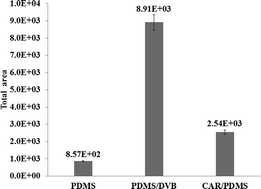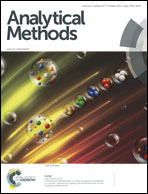Optimization of headspace solid-phase microextraction conditions to determine fruity-aroma compounds produced by Neurospora sitophila
Abstract
The biotechnological production of aromatic compounds is an important alternative to the chemical synthesis of flavor ingredients in food industry. Therefore, the development of an accurate and precise analytical technique for the measurement of the biotechnological production of aromatic compounds is of significant importance. In this paper, we optimize the extraction conditions for headspace solid-phase microextraction coupled to GC-FID and GC-MS for the determination of ethyl hexanoate produced by Neurospora sitophila in a malt-extract medium. Following three SPME fibers were tested: polydimethylsiloxane (PDMS), carboxen-polydimethylsiloxane (CAR/PDMS) and polydimethylsiloxane-divinylbenzene (PDMS/DVB). The PDMS/DVB was the most efficient fiber for trapping the volatile aromatic compound. The optimized SPME extraction temperature and time were 30 °C and 10 min, respectively. This method showed good linearity and the limits of detection (LOD) and limits of quantification (LOQ) of the targeted aromatic compound were 0.6 and 1.9 mg L−1, respectively. The HS-SPME methodology proved to be a simple and rapid approach to quantify ethyl hexanoate accurately and precisely for the biotechnological production process.



 Please wait while we load your content...
Please wait while we load your content...